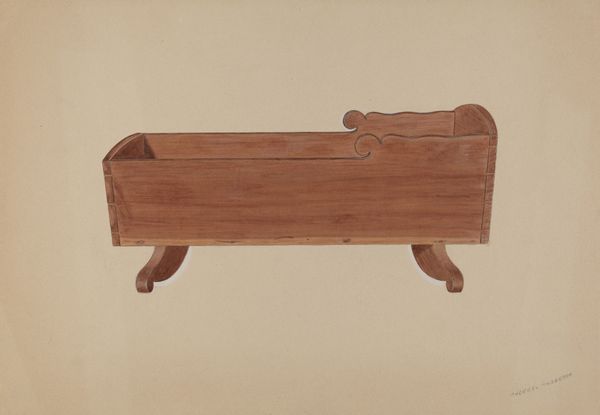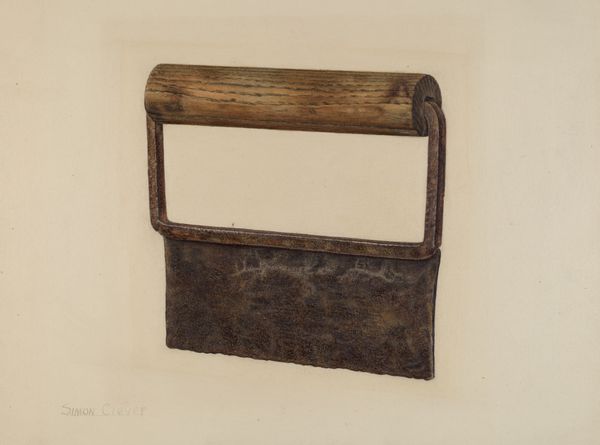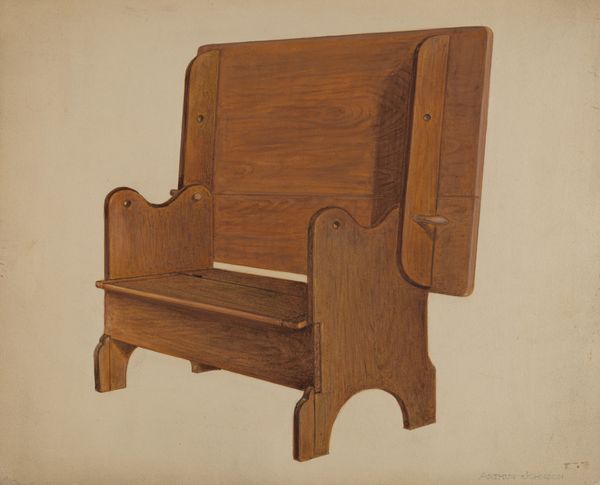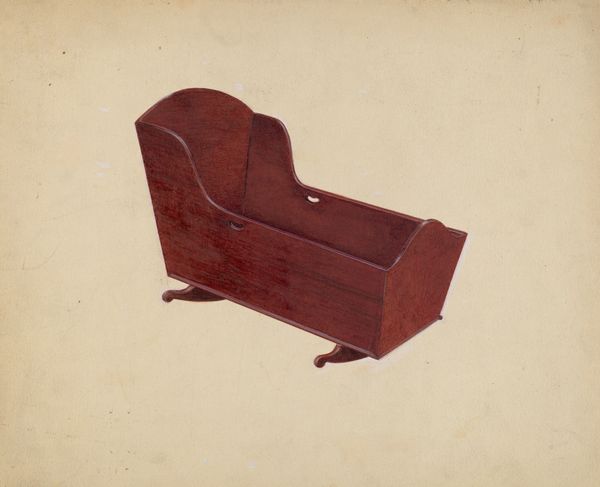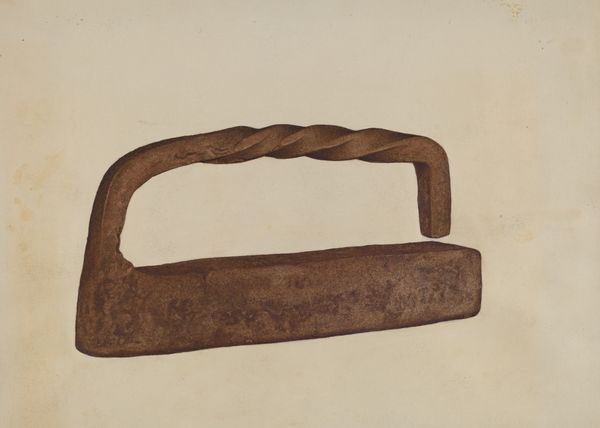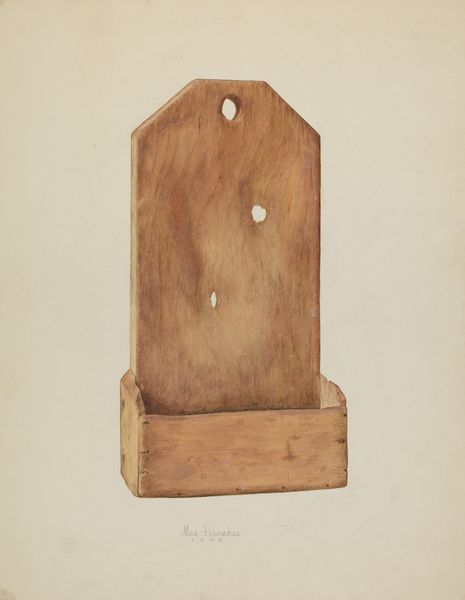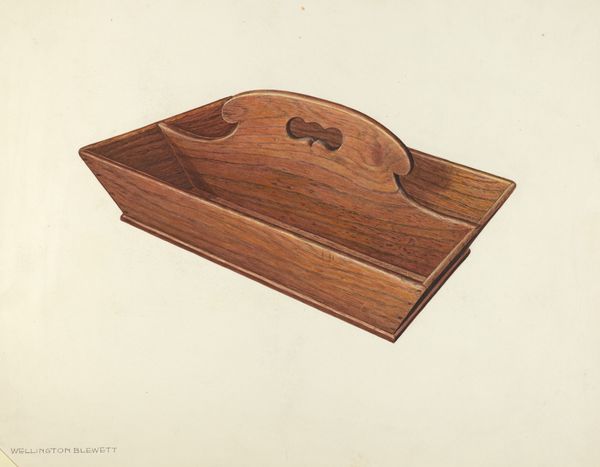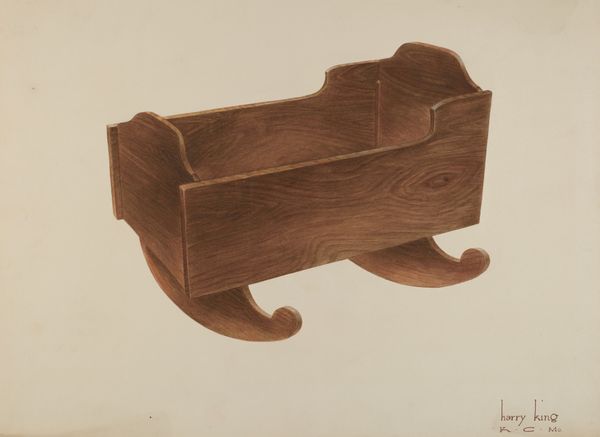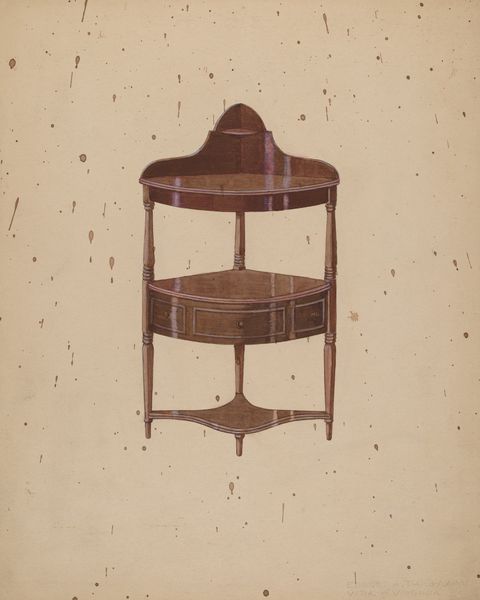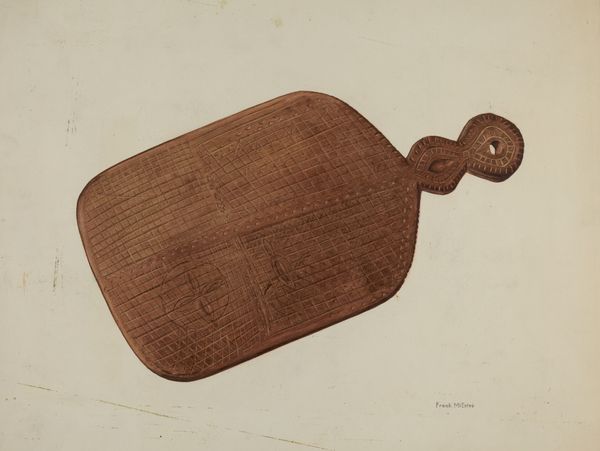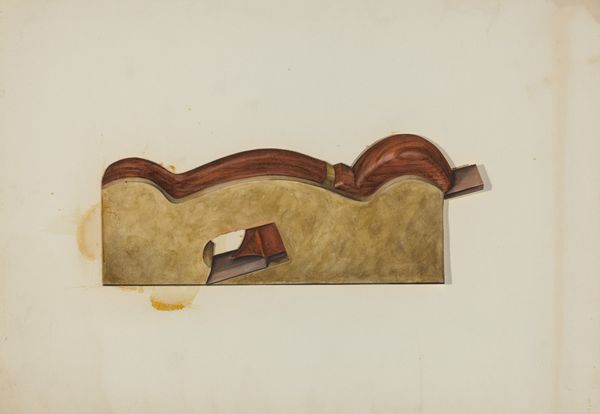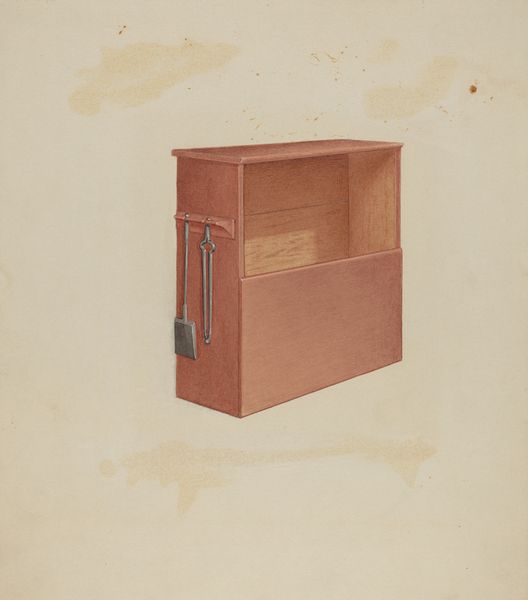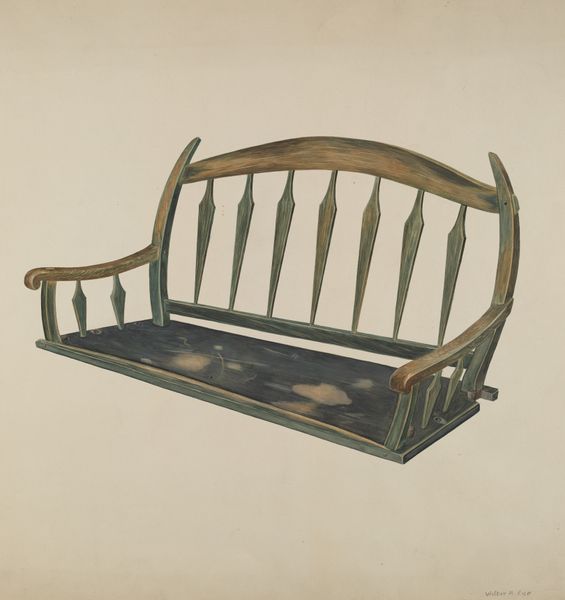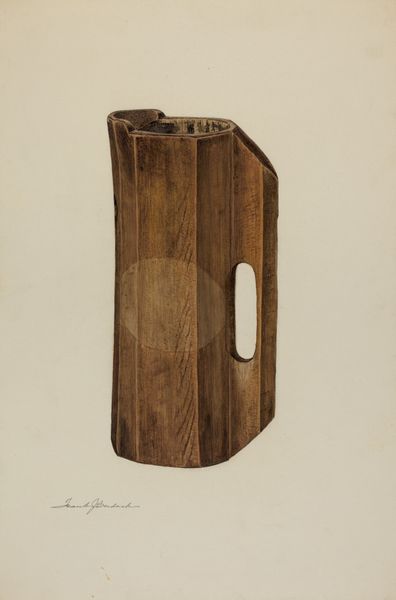
drawing, pencil
#
drawing
#
pencil drawing
#
pencil
#
academic-art
#
realism
Dimensions: overall: 21.6 x 29.6 cm (8 1/2 x 11 5/8 in.) Original IAD Object: 12" high; 16" long; 10" wide
Copyright: National Gallery of Art: CC0 1.0
Curator: This unassuming drawing of a ballot box, created sometime between 1935 and 1942, catches the eye with its stark realism. The artist, Robert T. Gills, used pencil and ink wash to render this seemingly mundane object. What are your initial thoughts? Editor: Well, it feels…weighted. Not literally, of course, but emotionally. The drawing’s precision gives this everyday object a sense of gravity, as if it carries the hopes and anxieties of a community. Curator: Precisely. During this period, in the midst of the Depression era and with the rise of various sociopolitical tensions, the ballot box held a significant weight. Especially considering disenfranchisement and active voter suppression of black voters during this era. The drawing isn’t just depicting an object; it gestures towards these realities. Editor: Absolutely. It's interesting how Gills emphasizes the formal elements: the smooth curve of the box, the precisely rendered handle, the shadows suggesting volume. Yet, what's missing is just as potent—the implied presence of hands, of votes being cast, and the community surrounding the ritual of voting. Curator: The choice of materials and the realism style underscore this connection to material reality. It seems like Gills deliberately avoided romanticizing or idealizing the subject. Instead, there’s an attention to the wooden texture, lending authenticity to this object used for democratic processes. Editor: It makes you think about the institutions and power structures implied by a simple box. Where would this have been located? Who would have been allowed, or not allowed, to use it? The starkness of the image raises those questions deliberately, I think. Curator: It invites us to consider access and exclusion. What does democracy mean when these processes aren't equally available to all? Considering Jim Crow laws at that time in the South and the barriers they erected to black citizens to vote, Gills may have been subtly critiquing this gap. Editor: It really goes to show how much political and social commentary can be embedded in an apparently neutral depiction of a seemingly ordinary object. Curator: Indeed, it forces us to acknowledge the intersectionality of identity, voting, and power, both then and now. A vital reminder, I think.
Comments
No comments
Be the first to comment and join the conversation on the ultimate creative platform.
